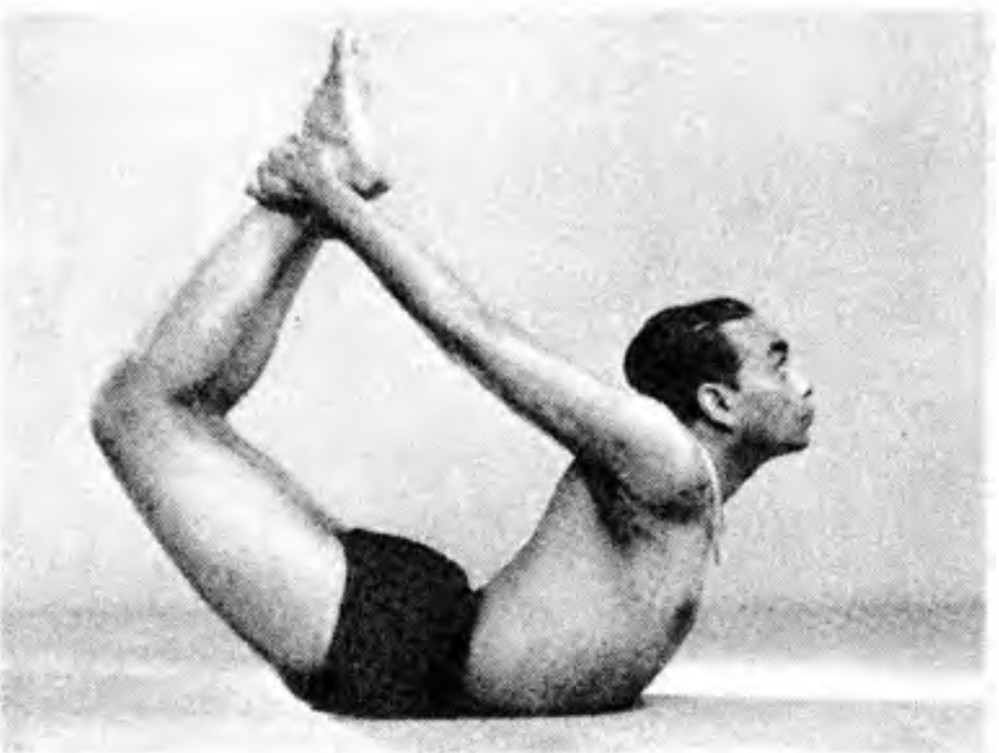Search your article
Dhanurasana
Dhanurasana – 4
Dhanu means a bow. The hands here are used like a bow-string to pull the head, trunk and legs up and the posture resembles a bent bow.
Technique
1 . Lie full length on the floor on the stomach, face downwards.
2. Exhale and bend the knees. Stretch the arms back and hold the left ankle with the left hand and the right ankle with the right hand. Take two breaths.
3· Now exhale completely and pull the legs up by raising the knees above the floor, and simultaneously lift the chest off the floor. The arms and hands act like a bow-string to tauten the body like a bent bow.
4· Lift up the head and pull it as far back as possible. Do not rest either the ribs or the pelvic bones on the floor. Only the abdomen bears the weight of the body on the floor.
5· While raising the legs do not join them at the knees, for then the legs will not be lifted high enough. After the full stretch upwards has been
achieved, join together the thighs, the knees and the ankles.
6. Since the abdomen is extended, the breathing will be fast, but do not worry about it. Stay in the pose to your capacity from 20 seconds to one minute.
7· Then, with an exhalation, release the ankles, stretch the legs straight, bring the head and the legs back to the floor and relax.
Effects
In this posture the spine is stretched back. Elderly people do not normally do this, so their spines get rigid. This asana brings back elasticity to the spine and tones the abdominal organs. In my experience, persons suffer ing from slipped discs have obtained relief by the regular practice of Dhanurasana and Salabhasana without being forced to rest or to undergo surgical treatment.
